Unravel - The Power and Politics of textiles in Art @ The Barbican
13th Feb 2024 – 26th May 2024
If asked to describe textiles and those that work with them, it is fair to say that most people would probably describe a domestic setting with women, either individually or in small groups, working with thread and material to produce functional pieces.
‘Art’? No, probably ‘craft’.
This last point is at the heart of this exhibition, for the hierarchies of an art world dominated by white men in step with the patriarchal societies they inhabit, have deemed that work with textiles (historically done by women) to be somehow less worthy than, say, painting in oils (historically done by men).
Yet, what the Barbican shows with ‘Unravel’ is that there is and has been a rich history of artists working with textiles that challenge this narrative. The work they have produced moves away from the notion of textiles as domestically functional and instead explore themes of identity, power, abuse, the other and history in remarkable ways. Organised thematically under headings such as ‘Wound and Repair’, ‘Subversive Stitch’, ‘Fabric of Everyday Life’ ‘Borderlands’, ‘Bearing Witness’ and ‘Ancestral Threads’, there is a palpable anger in many of the works; Anger borne from injustice in its many forms. The fact that these artists come from diverse regions of the world only highlights the depressing fact that injustice and frustration exists worldwide.
There were so many standout pieces in this exhibition, however here are just some of those astonishing works.
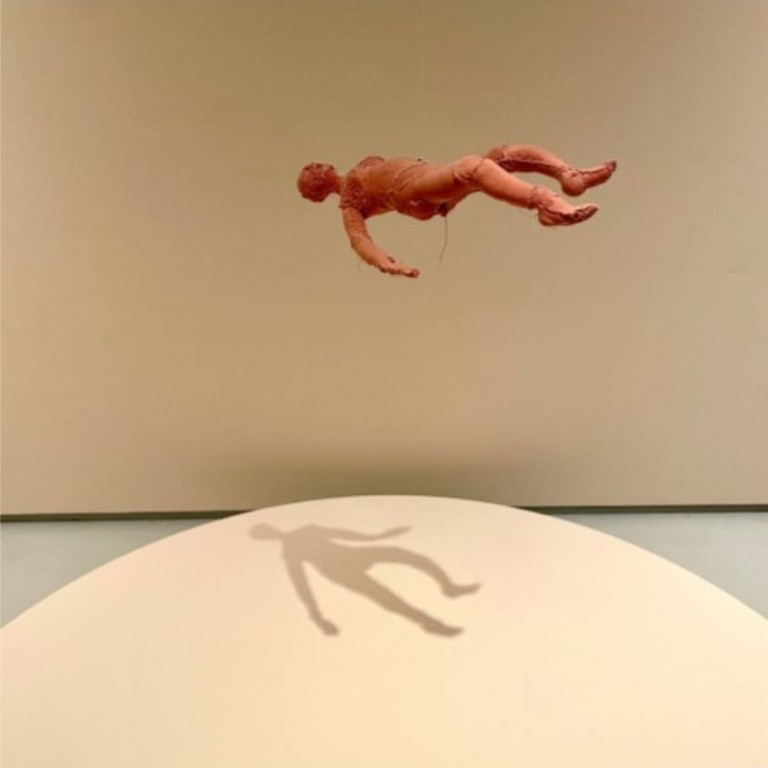
‘Arch of Hysteria’ (2000)
Louise Bourgeois – ‘Arch of Hysteria’ (2000)
Hysteria, historically thought to be a psychic condition only affecting women. Bourgeois explores how psychic
pain can manifest itself in scars. The body, falling, out of control, criss-crossed with bandaged seams, haphazardly stitched together.
Ghada Amer – ‘Pink Landscape’ (2007)
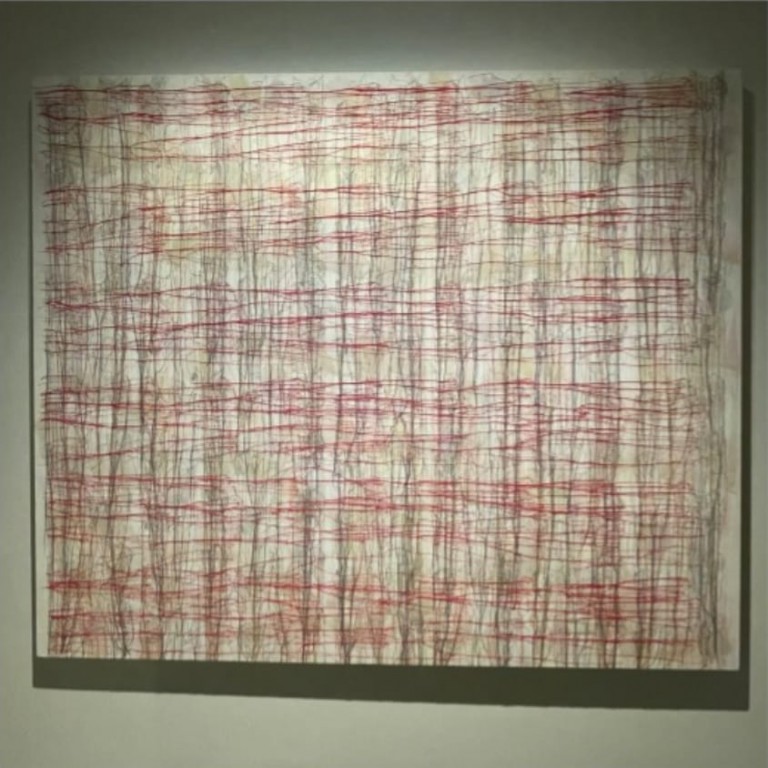
‘Pink Landscape’ (2007)
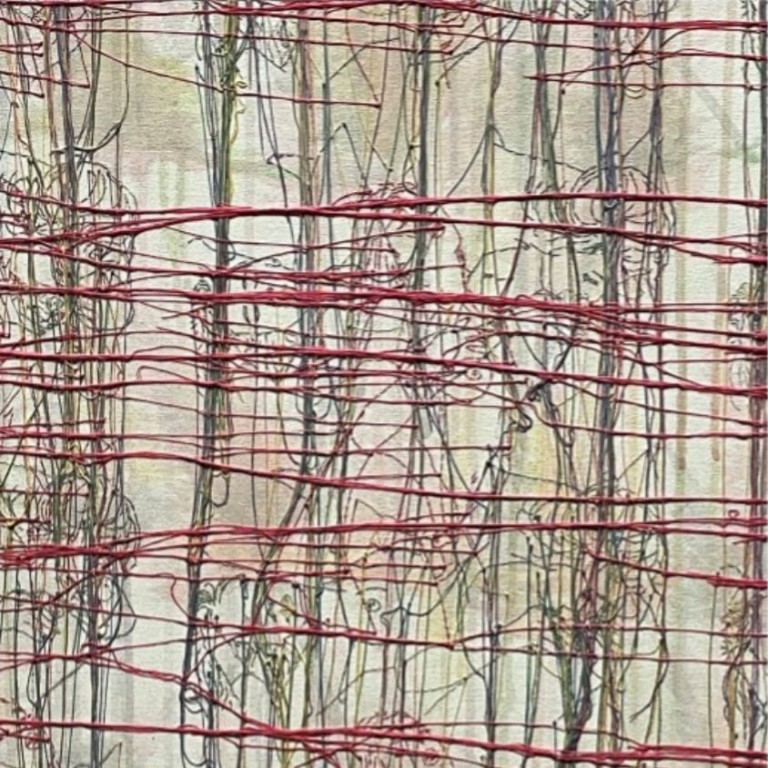
‘Pink Landscape’ (2007) detail
An abstract work comprising acrylic, embroidery and gel medium, Amer’s work confronts the male gaze by challenging conventional depictions of the female nude in art. Underneath the ‘curtain’ of embroidered threads, women pleasure themselves. Their masturbatory poses a stark contrast to those of the demure reclining nudes in classical works so admired throughout the ages.
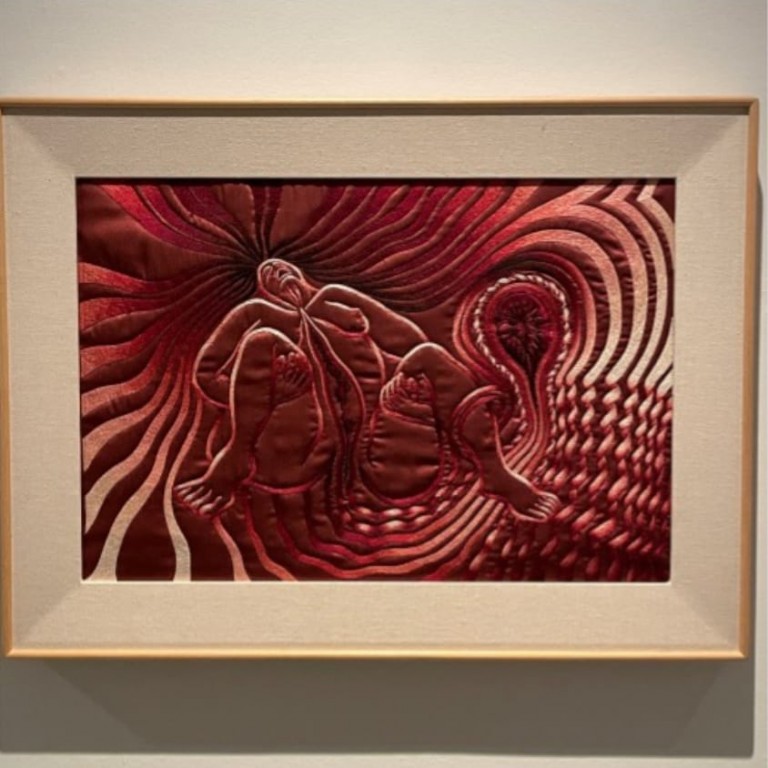
‘Birth Tear/Tear’ (1982)
Judy Chicago – ‘Birth Tear/Tear’ (1982)
Chicago’s piece was borne from the ‘Birth Project’ in collaboration with 150 other artists, which celebrated the birth process. Birth Tear/Tear was a direct statement aimed at the art world and its lack of depiction of birth in its celebrated works.
An affirmation of the pain and beauty in the delivering of life to the world.
Tracey Emin – ‘No Chance (WHAT A YEAR)’ (1999)
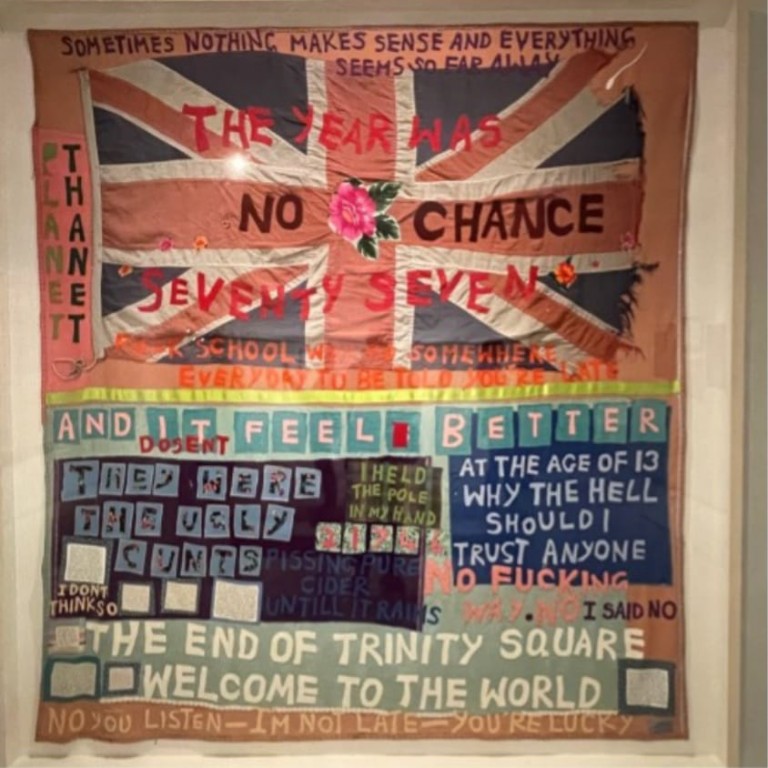
‘No Chance (WHAT A YEAR)’ (1999)
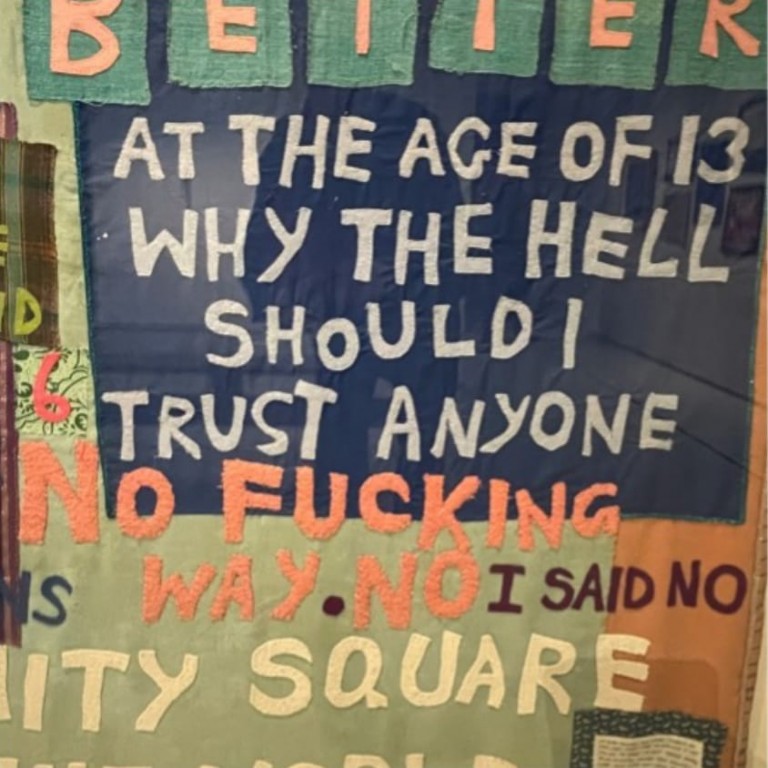
‘No Chance (WHAT A YEAR)’ (1999) detail
I shall put aside here, the shaming question as to why it is that of the few artists whose names I recognised, none were from the Global South? Tracey Emin’s work though was immediately identifiable. The subject matter, the directness and the use of text all characteristics of her work with textiles. It can be argued, that Emin’s work has never moved away from the self. It is unashamedly Emin centric and certainly with her earlier works, exercises in trauma management. Does that lessen her body of work when viewed collectively? Possibly. However, when viewed individually, the works, and this one in particular, are punches to the solar plexus. It forces the viewer to see the world through Emin’s eyes as a raped thirteen year old girl. The world we see is truly horrific. Emin does not attempt to sanitise the experience for the viewer and why should she?
Malgorzata Mirga-Tas – ‘Out of Egypt’ (2021)

‘Out of Egypt’ (2021)
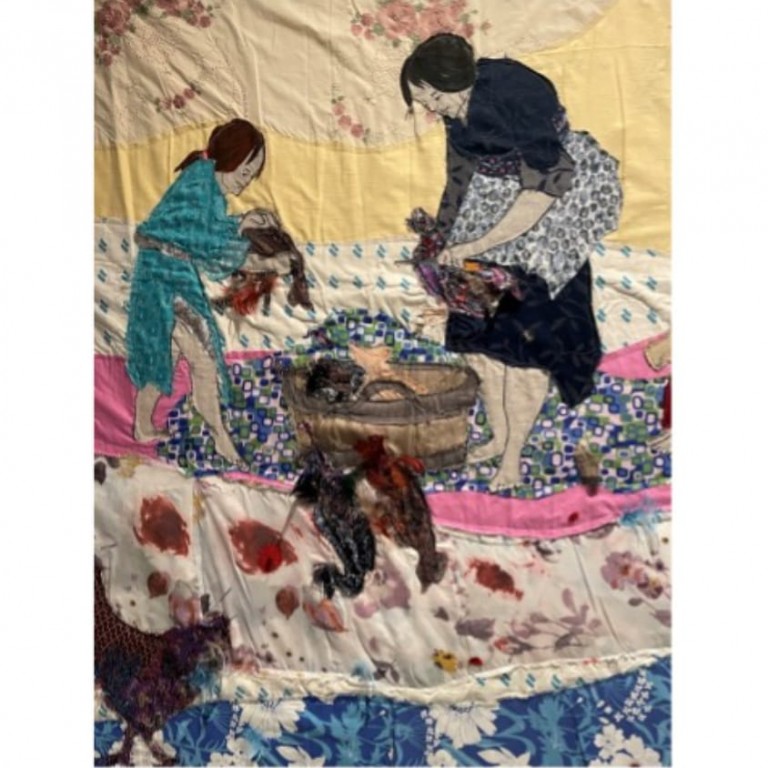
‘Out of Egypt’ (2021) detail
Mirga-Tas reclaims the narrative around the Roma in her native Romania. Often persecuted and othered, Mirga-Tas uses objects and textiles from her own community to portray scenes of everyday life that separate the reality of the modern-day Roma from the historical depictions of this marginalised group.
Billie Zangewa – ‘Midnight Aura’ & ‘Angelina Rising’ (2012)
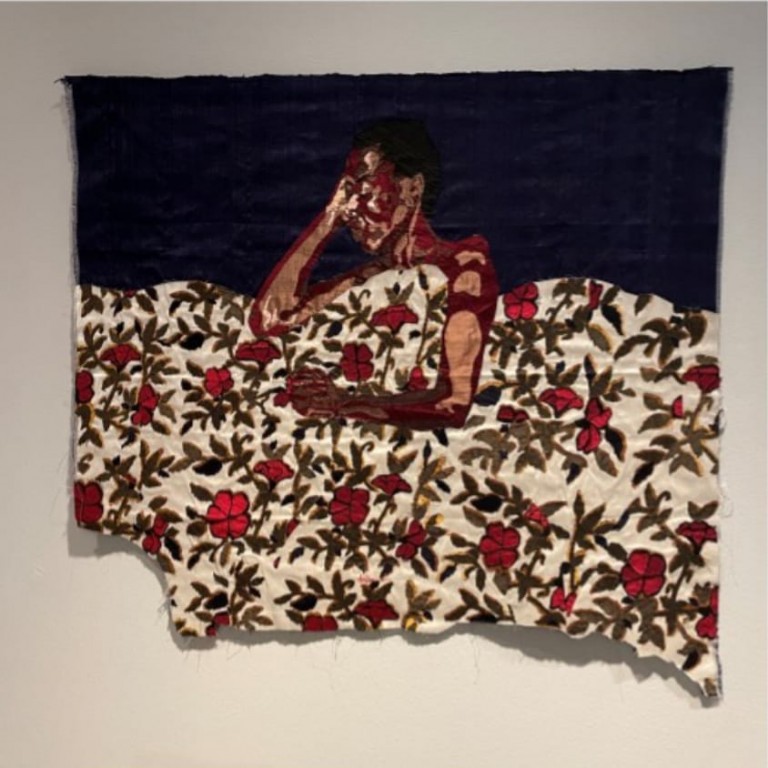
‘Midnight Aura’ (2012)
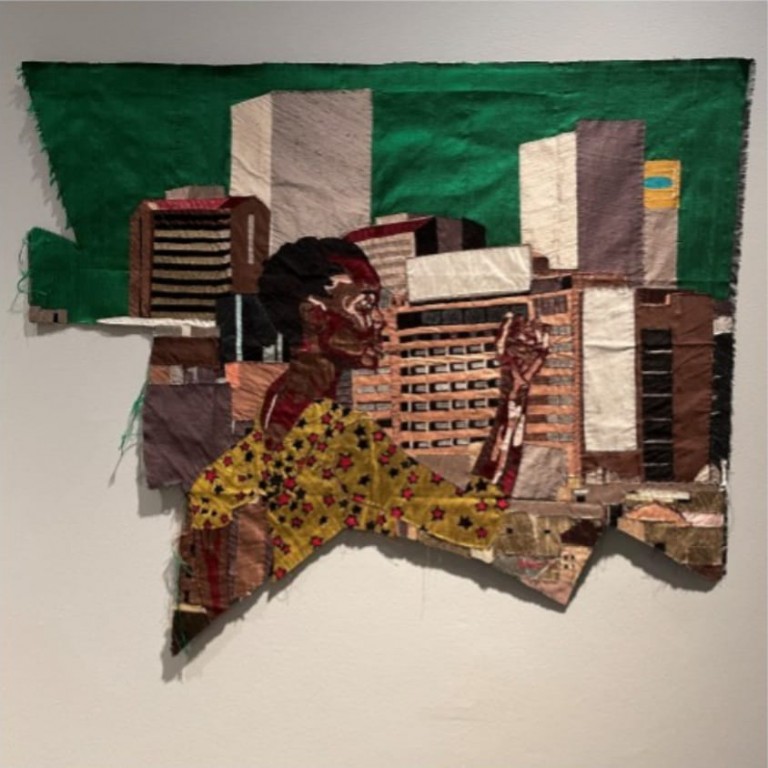
‘Angelina Rising’ (2012)
Zangewa reclaims her ‘identity and feminine power’ with these works. The names Aura and Angelina taken from the names given by the colonial era Dutch textile trading company Vlisco operating out of West Africa, for two of its patterns. Her role in society need not be visible, in the traditional Capitalist sense of production, for it to be important. ‘Midnight Aura’ depicts her resting after her domestic chores.
Violeta Parra – ‘Fresia y Caupolican’ (1964 - 1965)
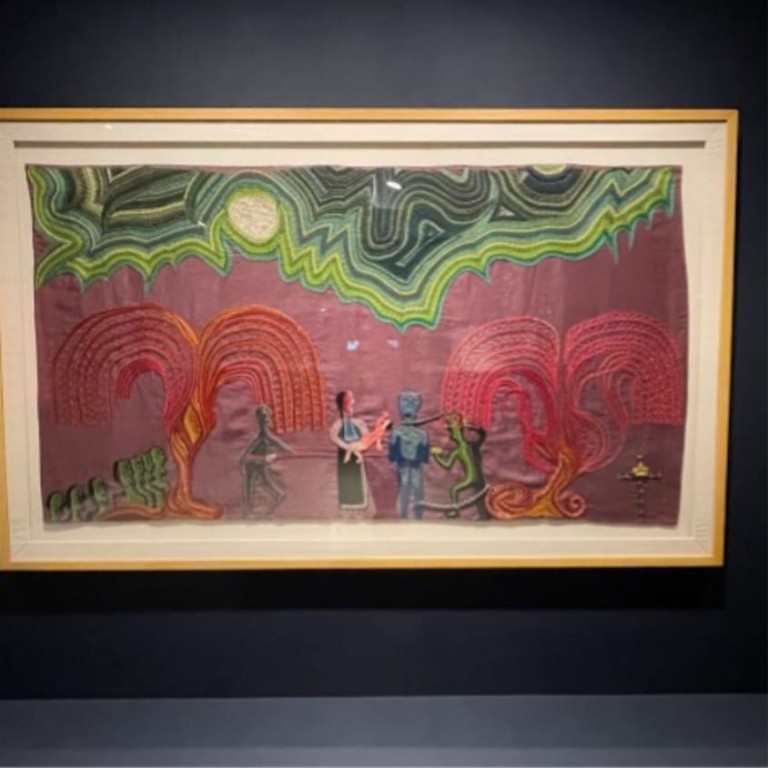
‘Fresia y Caupolican’ (1964 – 1965)

‘Fresia y Caupolican’ (1964 – 1965) detail
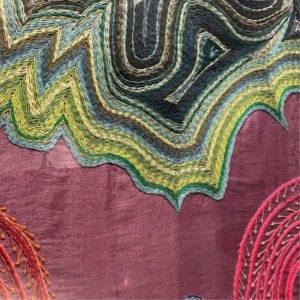
‘Fresia y Caupolican’ (1964 – 1965) detail
Bearing witness to the violent arrival of the Spanish in South America. Parra takes a passage from an epic sixteenth century poem that narrates the Spanish conquest of Chile. Depicting individual acts of barbarism Parra challenges the dominant colonial narrative that the Spanish were a civilising force.
Tau Lewis – ‘The Coral Reef Preservation Society’ (2019)
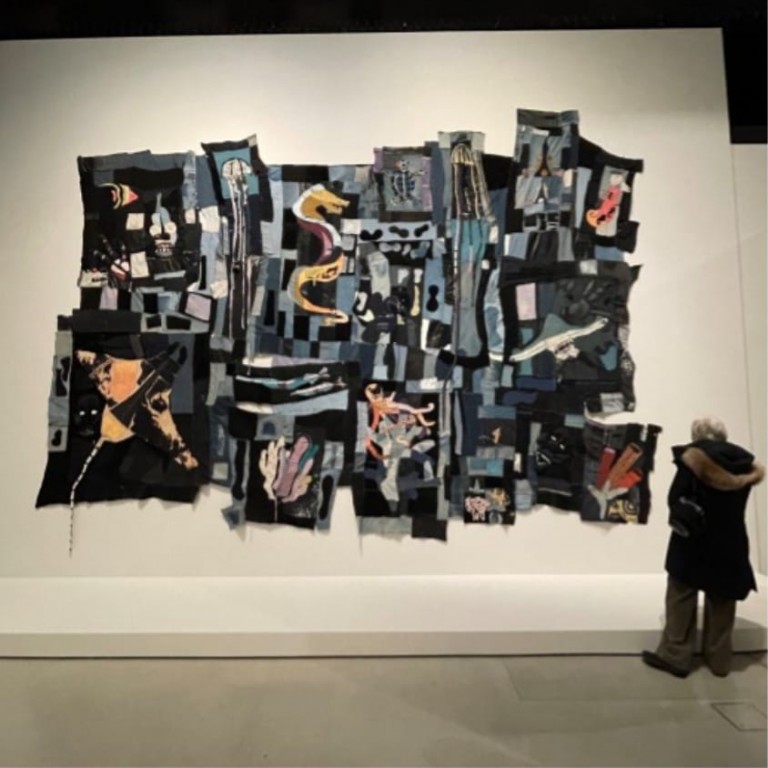
‘The Coral Reef Preservation Society’ (2019)
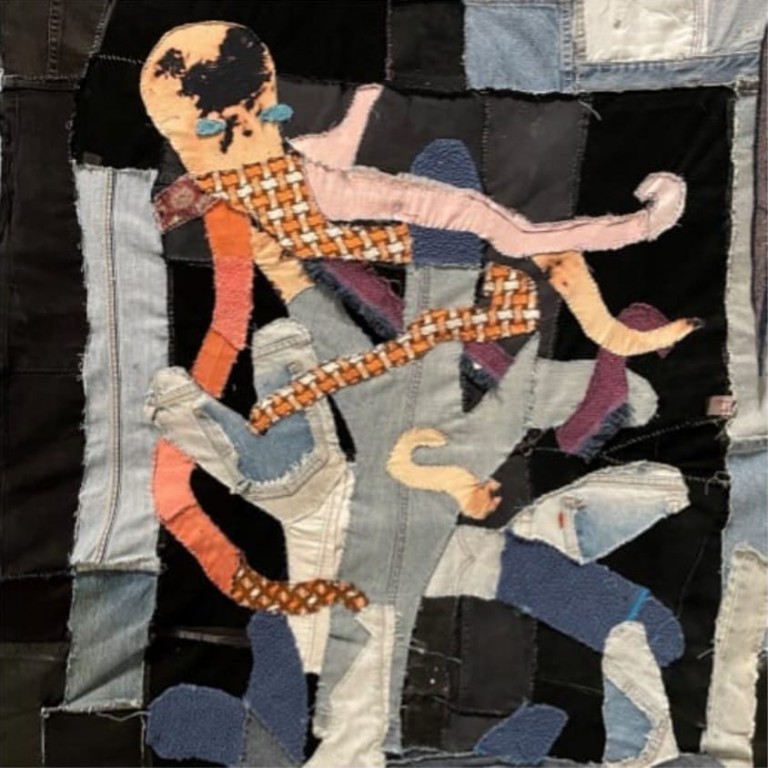
‘The Coral Reef Preservation Society’ (2019) detail
The ‘Middle Passage’ was the harrowing voyage undertaken by enslaved West Africans to work as ‘chatells’ (aka slaves, the personal properties of their owners) on the plantations of the Caribbean and the American South. Many did not survive the crossing and as such the sea bed of the Atlantic became the resting place of those souls. Lewis, gives life to these souls by imagining them as sea creatures still inhabiting the depths. The eyes and teeth, worn down shells found on the beaches of Jamaica, linking the past to the present and weaving the ancestral DNA into the work.
Teresa Margolles – ‘american Juju for the Tapestry of Truth’ (2015)
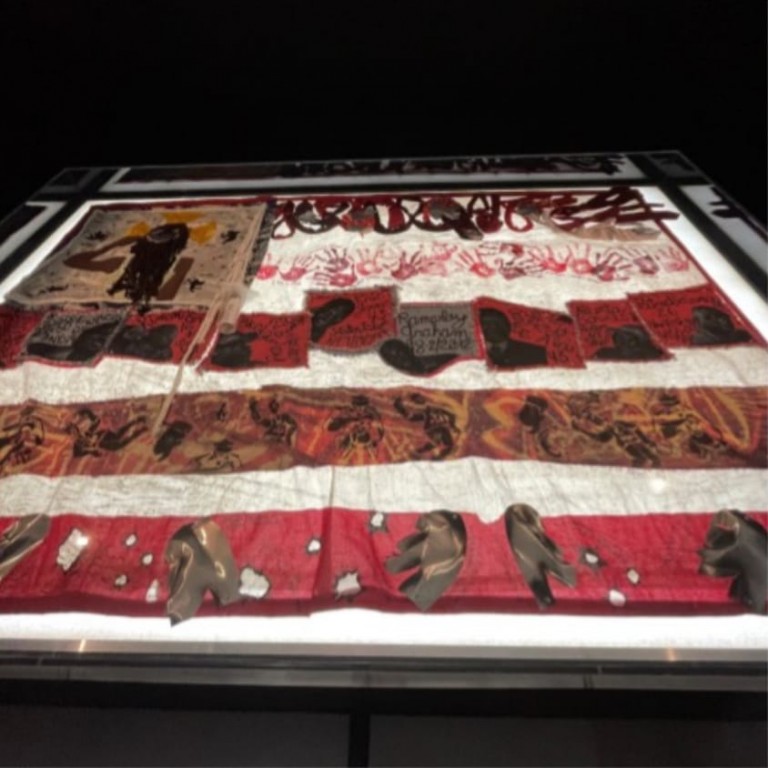
‘american Juju for the Tapestry of Truth’ (2015)
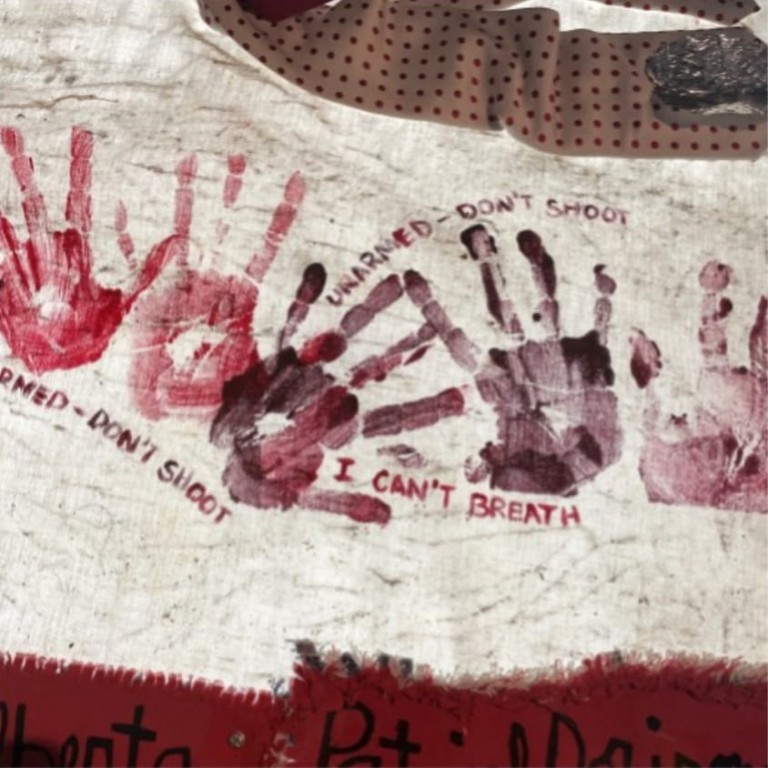
‘american Juju for the Tapestry of Truth’ (2015) detail
Lest we think that violence, discrimination, exploitation and subjugation is a historical phenomenon or only occurs in other societies, Margolles brings our attention very much to the present day in the United States. The black experience at the hands of the instruments of state power, namely the police. ‘american Juju for the Tapestry of Truth’ takes as its starting point the death of Eric Garner in 2014 at the hands of New York police officers. The tapestry created from the cloth laid by Garner as he died on the pavement, to ensure he and others are not forgotten.
His cries of “I can’t breathe”, also echoed in the words of George Floyd in 2020, killed at the hands of the police, have become a wider representation of the suffocating nature of law enforcement on the American black community.
Why was this exhibition so surprising? Firstly it challenged the established hierarchy of ‘Fine Art’ in which textiles are not seen as ‘proper’ art. A hierarchy perpetrated and sustained by galleries, collectors and the art establishment. Secondly it became clear that artists used textiles to move away from conventional themes. Artists explored experiences of exploitation, identity, history and politics and as such their work became subversive acts in themselves.
What the viewer therefore experienced was an exhibition that shone a bright light on the darkest corners of our societies both past and present. Uncomfortable but excellent.